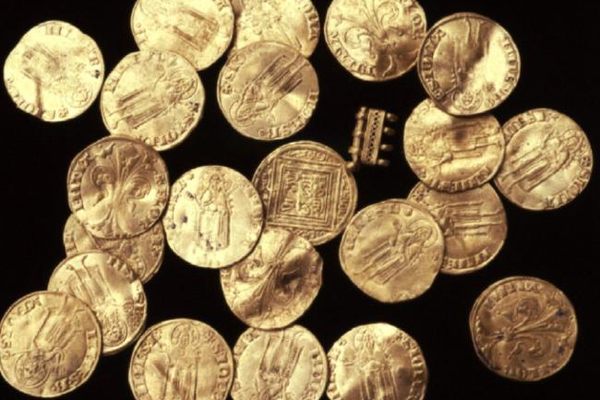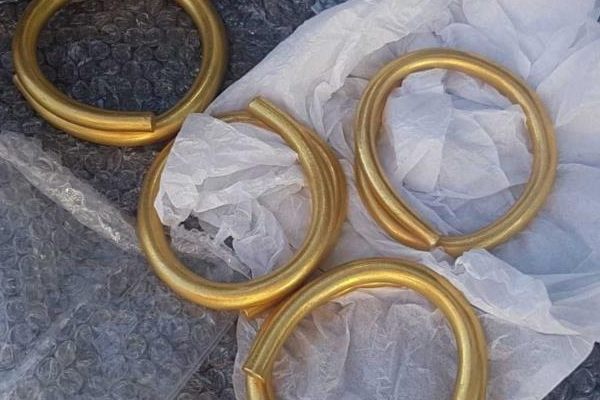Metal Detector Hobbyists Find Gold in a Field They Got Bored of 20 Years Earlier
The four pieces of jewelry date back to the Iron Age.

Metal detecting—let’s face it—can be kind of boring. Often, you can go searching and find nothing; more often, when you do find something, it’s trash.
Two British men, Mark Hambleton and Joe Kania, first tried metal detecting about 20 years ago, but, as The Guardian reports, the two friends “became so bored that they gave up the hobby.” Instead, they turned to the slightly more scintillating hobby of fishing.
But Hambleton’s father, himself a fan of metal detecting, pushed them to pick up their old hobby again. One of the places the two friends searched was a field in Staffordshire that they had searched 20 years earlier, during their first metal-detecting foray.

Once again, they started getting bored. But right when they were thinking of heading home, Kania found something. It was gold.
The pair had discovered four pieces of gold jewelry that date back to the iron age. The “torcs” are curves of ornamented gold, three meant to go around a person’s neck, one sized for a wrist. “Hambleton nervously kept the gold by his bed overnight until they could report the find,” The Guardian says.
By law, finds like this one must be reported the British government; the two men will receive a reward, which they will split with the landowner who owns the field where they were found. Archaeologists descended on the field to look for other artifacts but so far none have been found—just the four gold pieces that had been hiding in the field for ages.







Follow us on Twitter to get the latest on the world's hidden wonders.
Like us on Facebook to get the latest on the world's hidden wonders.
Follow us on Twitter Like us on Facebook